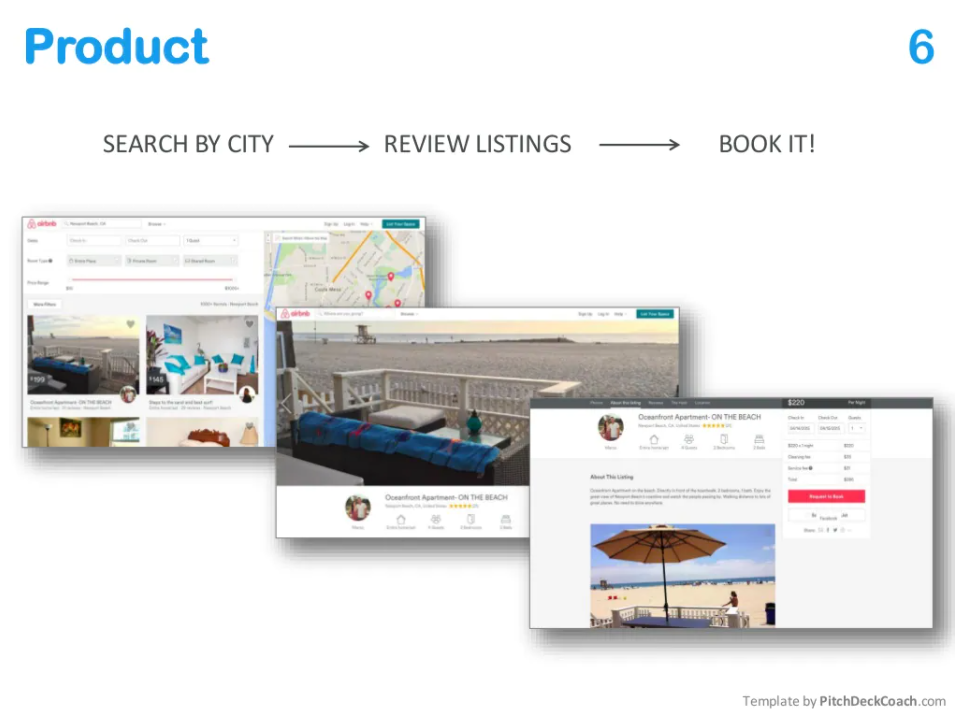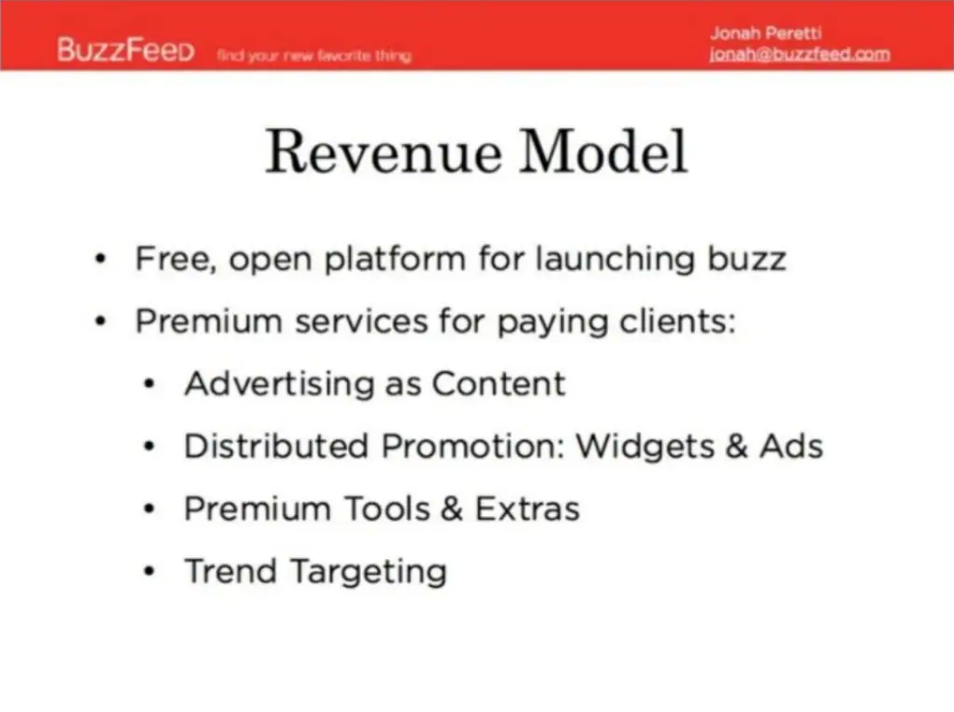Your startup has launched, and you strongly believe it can conquer the market. Now you need to make potential investors believe in it, too. That’s what a startup pitch deck is for. In 15-20 slides, you’ll tell an exciting story about your business that will earn funding from VCs. If you’ve never done it before, don’t worry – this guide will help you avoid mistakes that could cost you an investor.

Table of contents
What Is a Startup Pitch Deck?
Simply speaking, a startup pitch deck is a presentation that showcases your company, products, and goals to a potential investor. Founders use it to raise seed funding or additional financing later in their businesses’ development. The aim is to show the potential investor how your business will grow with their funding. Using available data, you’ll convince them to invest in your startup.
How to Create a Pitch Deck for Fundraising?
There’s no magic to it. A startup pitch deck consists of a professional-looking presentation template, a well-planned structure, and content that will earn the investor’s interest. It’s only one step in the arduous process of raising capital. Make sure you do it right before you move on to in-person presentations.
What Should a Startup Pitch Deck Include?
If you’re new to this and wondering how to pitch a startup, there’s good news. Countless companies have done it before, which means there’s a tried-and-tested formula for a startup pitch deck. Let’s divide it into four major parts that we’ll later break down into individual slides.
- The company.
- The opportunity.
- The means.
- The needs.
Investors are used to the typical structure of a pitch deck so try to stick to this order. With well-organized data, your story will be more convincing, and it will be easier for you to address any follow-up questions.
How Do You Structure a Pitch to Investors?
Have you chosen a startup pitch deck template yet? If not, you can find some good ones on Canva, Pitch, or create your own in PowerPoint. Lately, the quality of graphics matters more than ever, so it might be worth hiring a graphic designer.
Now we’ll walk through the structure of a startup pitch slide by slide. Treat the numbers as hints – you can always add more slides with product screenshots, photos, and infographics to illustrate what you’ve put in the text.

The Company – Overview (Slide 1)
Many presentations start with a bland cover of just the company’s logo. It’s better if the first slide contains some helpful information already, including the problem you solve and the traction you’ve established so far. Try to summarize your startup in 4-5 bullet points. Here’s an example:
- Meal Of The Day is a Los Angeles-based subscription box startup delivering new recipes and pre-measured ingredients every day to people who have food allergies but don’t have time to cook for themselves.
- We have developed artificial intelligence to create personalized menus for every user, allowing us to address a $2 billion+ market opportunity.
- Our team consists of creative individuals, including a 2 Michelin star chef and an experienced AI specialist.
- We have over 20,000 active one-year subscriptions, and the number of subscribers is increasing 20% every month.
The Company – the Mission and the Team (Slides 2-3)
The following two slides will present your company in more detail. First, describe its mission or vision briefly, e.g., “We are the solution for people with food allergies looking for a fully personalized meal kit service.” Then, introduce the team with pictures, job titles, and a summary of each member’s work experience. Let their expertise shine – the team determines the outcome of an investor pitch more often than you’d think.
The Opportunity – The Problem and The Solution (Slides 4-5)
Name the problem that your startup strives to solve. Don’t just say, e.g., “We accommodate food allergies.” Delve more deeply into your potential customers’ needs; for example, “10.8% of American adults have food allergies. Most meal kit services don’t have a way of excluding specific ingredients from the menu – instead, those people are forced to opt-out and will often eat processed foods to save time on cooking.”
Notice that in the example, not only the problem was defined but also the reason why it’s important and the target customers. On the next slide, describe your solution – in this case, it could be “renting three different facilities for packaging the ingredients, one of which is free of the top 10 allergens, and another available for more special orders”.
The Opportunity – the Market, the Product, and the Customers (Slides 6-8)
Whether you describe your product or the market first is up to you. One of the slides should define the market you’re in, its size in dollars, and what portion of it you’re going to address. Graphs will help you greatly in conveying this kind of information. When it comes to describing your product, you should:
- emphasize its key features,
- state what makes it different from other solutions on the market and why customers care about it,
- describe the milestones so far and how you’re planning to develop the product.

On Slide 8 (or whatever the number turns out to be in your case) of your startup pitch deck, it’s worth including the logos of your early customers – or partners if you’re not selling to companies. If you don’t have anything to share yet, skip it.
The Means – the Technology, Competition, and Traction (Slides 9-11)
Technology is such a critical part of running a business; your potential investors will surely be interested in what you use or are planning to use. That includes patents, trademarks, and other intellectual property rights that your competition will find difficult to replicate.
Speaking of competition, you need to address it, too. Name the companies that compete with yours directly and state your advantage over them. What makes you different? You might have already hinted at the answer as we did in the “Problem” slide. Now it’s time to show that you know and understand your competitors very well – the investor is sure to ask questions.
Sharing your early traction – e.g., website traffic or sales, partnerships, press coverage, and testimonials – will do wonders for your company’s credibility. If you haven’t done it in other slides yet, you can do it separately.
The Means – the Business Model and the Marketing Plan (Slides 12-13)
The way your business operates will also be important to investors. In your startup pitch deck, tell them how you make money and how you acquire customers. Pricing models, acquisition costs, and the long-term value of a customer should all be covered here.

Next, outline your marketing plan, including channels, early successes, and PR. Again, you might have already told some of this information. There’s no one answer to the question of how to write a startup pitch as long as you include all the relevant data.
The Needs – Financials and The Ask (Slides 14-15)
Before you ask the potential investor for money, help them understand your financial situation. Calculate your burn rate – that is, the rate at which you’re going to spend the initial capital. It’s also essential to include your (realistic) sales forecast, profit and loss statement, and cash flow forecast in the next to last slide.
There’s no need to tell the recipient all about your financials at this point. You might prefer to share the details in person. The last slide will be about the request. What should it contain?
- A range of how much funding you’re seeking (e.g., 1-2 million dollars).
- The estimated time of financing (e.g., 12-16 months).
- The milestones you expect to reach with the financing and what you’re going to use it for (e.g., launching a new product version or hiring more salespeople).
Be sure to mention your existing investors, too – especially if they’re well-known.
How Do You Write a Startup Pitch?
A good startup pitch deck template and structure are not everything. It needs to be well-written, too. Forget wordy descriptions that leave you regretting that the slide doesn’t have more room. If you’re struggling to cover everything without making the presentation lengthy, it’s a great idea to include explanatory videos and infographics.
What’s more, you should use simple language – leave out the industry jargon or acronyms. Stay away from exaggeration, too, and never belittle your competition. The short answer to how to write a startup pitch is to be objective but still aim to spark excitement.
How to Email a Pitch Deck to Investors?

Are you ready with your presentation? If you’re going to send it before a meeting, be sure to do it right. Before emailing potential investors, arm yourself with software that will tell you when and how they view your startup pitch deck.
For example, Lofty – an AI-powered digital interior designer – used Sellizer to stay on top of their work to obtain financing from angel investors. After a pleasant onboarding, they imported their contacts from a CSV file and sent their pitch deck. Sellizer gave them information about:
- who had opened their files,
- how much time the recipient spent on reading each page,
- which messages required a follow-up.
With such analytics, they could prepare for the first conversation with a potential investor better than they could have without. And they obtained financing from 9 investors, much sooner than expected. Read more about their case here.
How to Email Your Deck – Template
What about the email itself? You’ve (probably) done your research and have a good idea about who you’re pitching to. Is this a cold email, or have you talked to this person before? Maybe you took the time to connect with their colleagues and get a warm introduction.
In any case, keep your email short and to the point. This template will help you if you’re emailing the investor for the first time:
Hi ___,
My name is ___. I am the ___ (role) of ___ (company name), a startup doing ___ (elevator pitch).
The founders are ___ (proof of expertise). We are in the stage of ___. We are targeting ___ (market), and our early traction is very promising: ___ (describe the traction).
We are looking for ___ (type of funding). We already have ___ funding from ___. I am attaching our pitch deck so you can learn more. Can we schedule a meeting this week?
Best regards,
___
The subject line should let the recipient know your intentions immediately. Examples:
- ___ (industry or product type) investment opportunity
- Introducing ___ (startup name), ___ (brief description).
Create Your Investor Pitch Deck and Get That Funding Money
Now you know how to write a startup pitch. It’s time to make a plan and stick to it. There’s a mountain of work ahead, and you’ll probably attend a lot of meetings before it all pays off. Make it easier for yourself by sending your startup pitch deck right away and tracking it – software such as Sellizer will help you with that.







